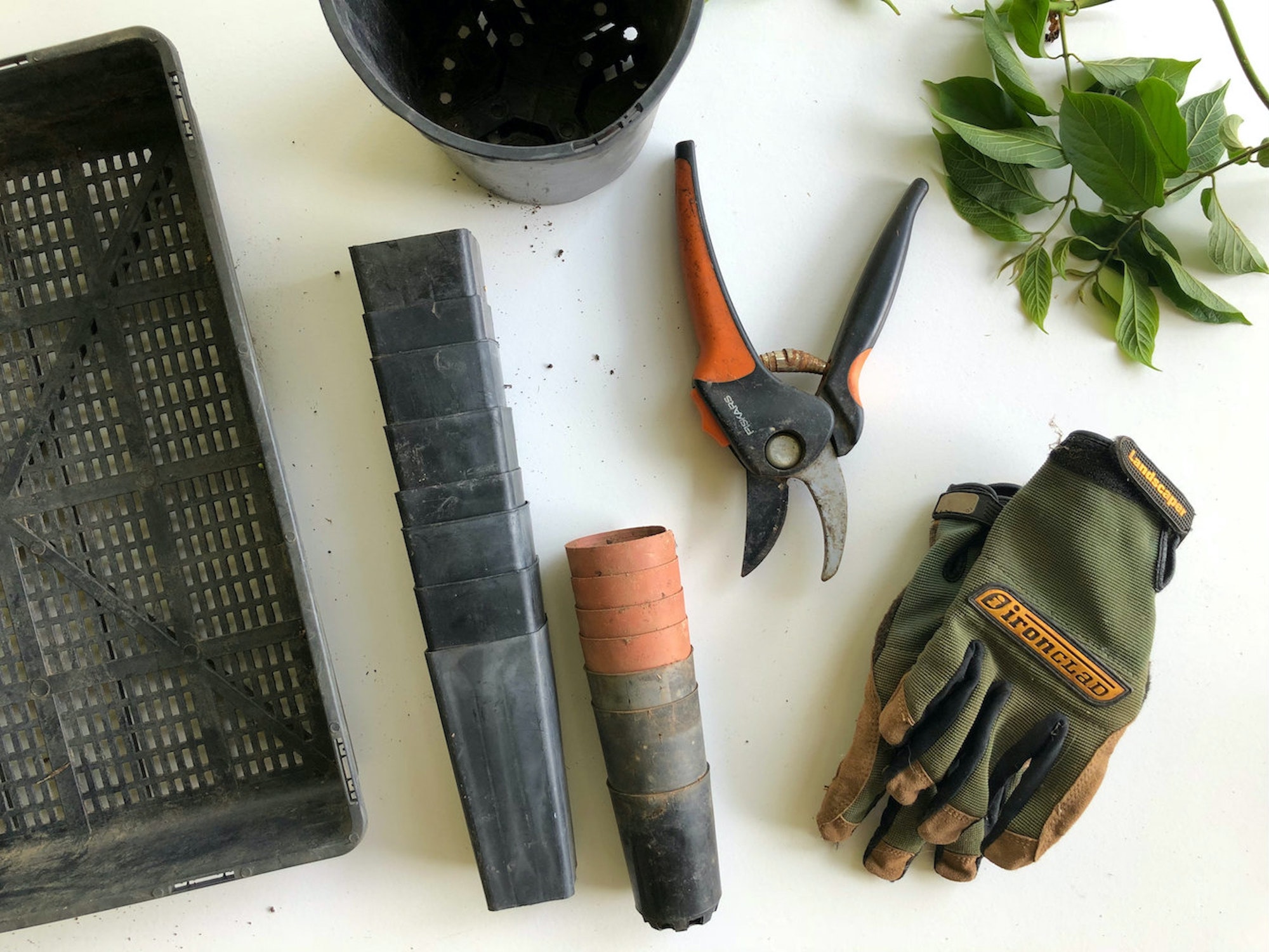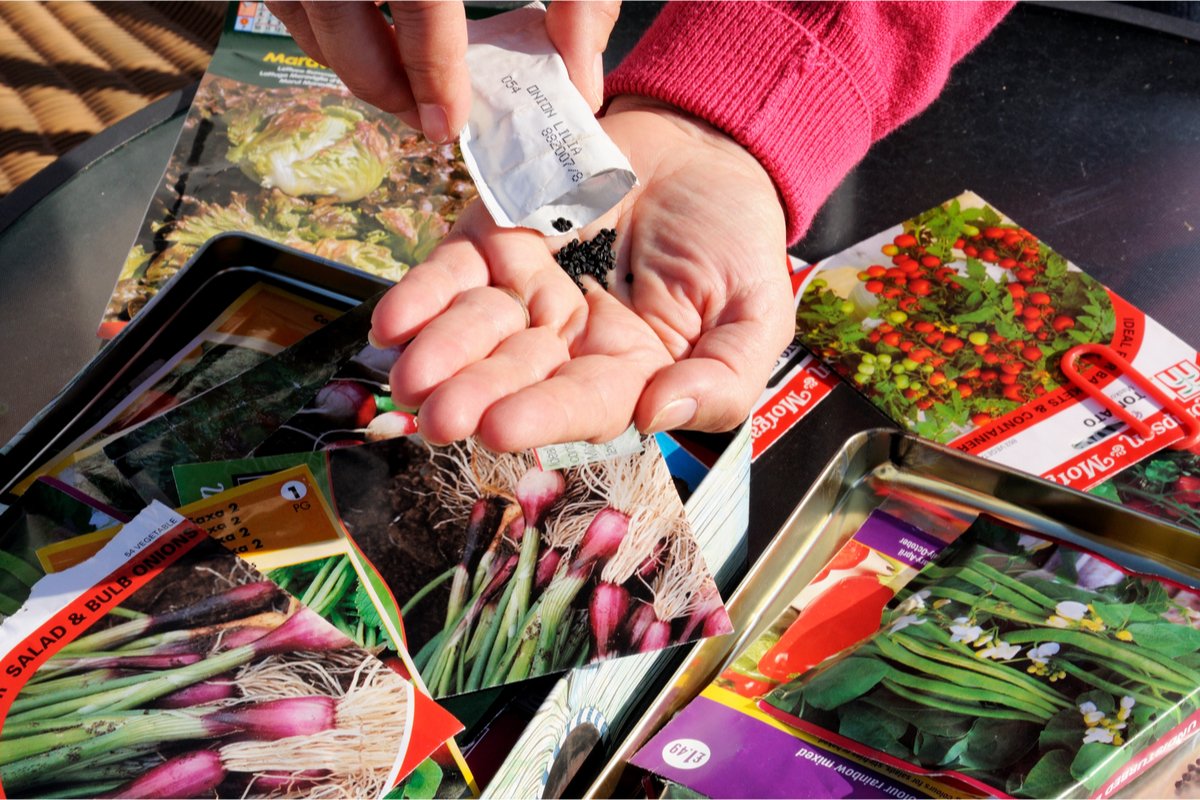Any avid gardener will tell you that the cold weather doesn’t really dampen the desire to get into the dirt and do a little work. You might not be dining al fresco or enjoying your morning coffee in the garden as much as you did in the spring and summer, but your cold-weather garden still offers plenty of outdoor pleasures you can enjoy.
Even as your plants go dormant and the temperatures dip, you don’t have to put gardening on hold. Here’s what you should do in the off-season to maintain your flower beds.
How to plan a garden for fall and beyond
Some vegetables and plants thrive in the cold weather — now is the time to focus on these seasonal sprouts so you can reap the rewards your fall gardening tasks will offer come springtime.
- Vegetables including Brussels sprouts, cabbage, and kale love cold weather. In fact, exposure to frost actually improves their taste.
- If you’ve wanted to add evergreens to your yard, fall is the best time to plant these shrubs and trees. Adding cedar, fir, juniper, and pine will provide structure and color to your yard all year long, and they’re pretty low maintenance, too.
- Container gardens, which you can house on your deck, patio, or porch, give you an opportunity to flex your green thumb, even if the ground is too frost hardened to make planting easy. Select plants that are hardy and tolerant to cold like wintergreen, ajuga, and hardy sedums.

Garden maintenance
When the weather is cooler and outdoor labor is more manageable, take the time to tackle annual maintenance to ensure you’ll have a spectacular garden next year.
To relocate shrubbery or trees, transplant them during the dormant, winter months. Get to work before the ground freezes, giving them time to settle into their new homes and establish roots in the soil before the spring thaw.
Fall is also the perfect time to prune deciduous shrubbery, vines, fruit, or ornamental trees so they will look more beautiful and grow stronger in the months and years ahead.
Your gardening downtime also affords plenty of opportunities to clean and sharpen your gardening tools and service your lawnmower (note: always drain the gasoline from your gas-powered mower before storing it for the dormant season). You can also take this time to clean out and organize your gardening shed, replace broken tools, sort seed packets, and purchase new tools or gadgets at end-of-season clearance prices.
Install a fire-pit
If you’re looking to get some use out of your garden in the off-season, adding a fire pit will extend your outdoor entertaining capabilities months beyond what they normally would be. You can go all-out DIY and craft a fire pit in a weekend or less, or you can buy a pre-made fire pit just about anywhere. Either way, there’s just something so enjoyable about spending an evening sipping red wine, making homemade s’mores, and shooting the breeze with your friends while gazing at a crackling fire.

Planning out your garden for next year
When all else fails and you absolutely cannot go outside or do anything more in your garden, there’s always next year. Long winter nights are made for browsing through seed catalogs and planning out what you want to plant in the spring. Spend the off-season sketching out the garden space of your dreams, then order seeds and summer bulbs early so you’ll be ready to start planting as soon as the weather and soil conditions permit.
If you don’t already have a garden pathway, fall and winter offer ample time for you to plan one out before constructing it in the spring. You’ll have months to select materials and plan the location, shape, and dimensions of your upcoming pathway.
Need inspiration? Curl up with a good book — a good gardening book, of course. It will inspire you and give you the knowledge and tools you need to create your best garden yet.
Force bulbs
Can’t wait until spring for a bit of springtime color? Don’t! Get a big jump on spring by forcing some garden bulbs indoors this winter. You can choose to grow them in water, gravel, or potting soil, but whichever method you prefer, the end result will be spring-fresh color — and fragrance — in the middle of dreary, cold February. If you can keep your forced bulbs growing right up until spring, you can eventually transplant them outdoors where they may actually bloom again! This indoor planting guide will help you get started.
Gardening can be a four-season hobby whether you spend it toiling in the hard soil or tending to indoor blooms. If you utilize the cold weather months well, your spring and summer gardens will certainly show all of your hard work.



